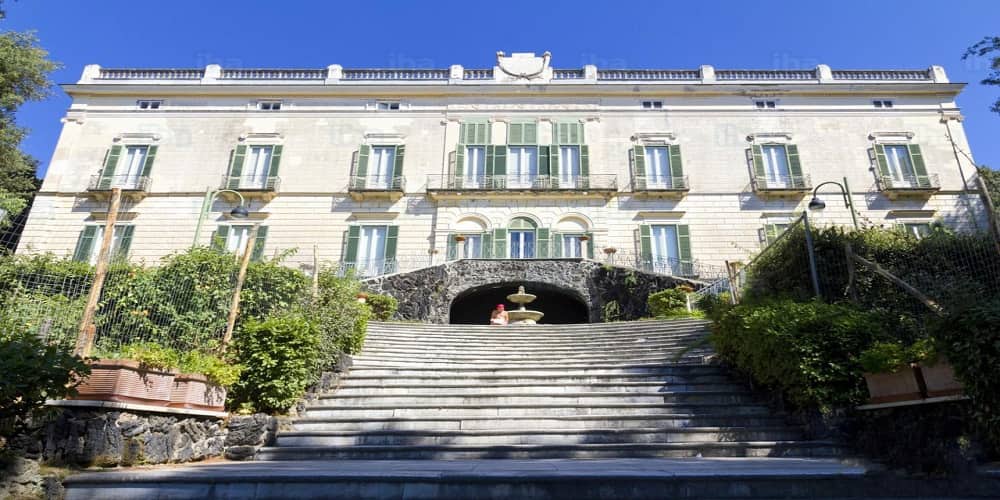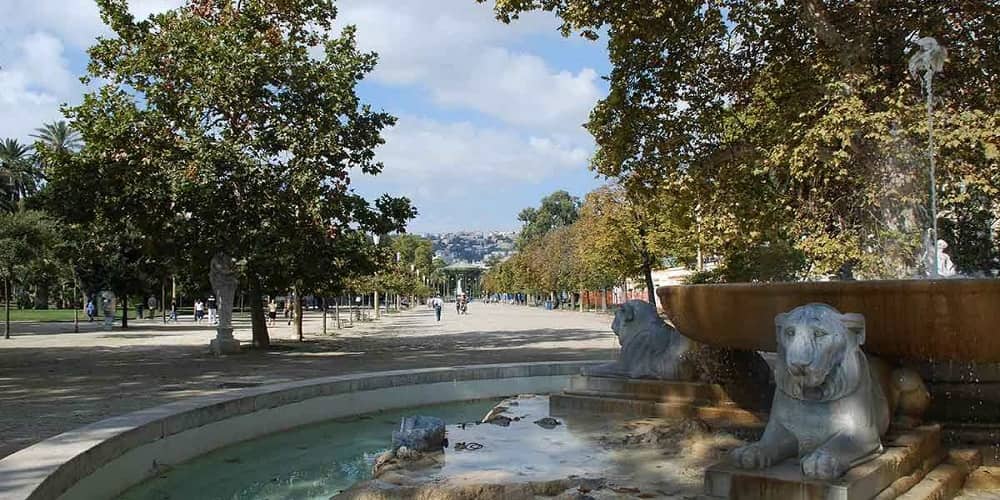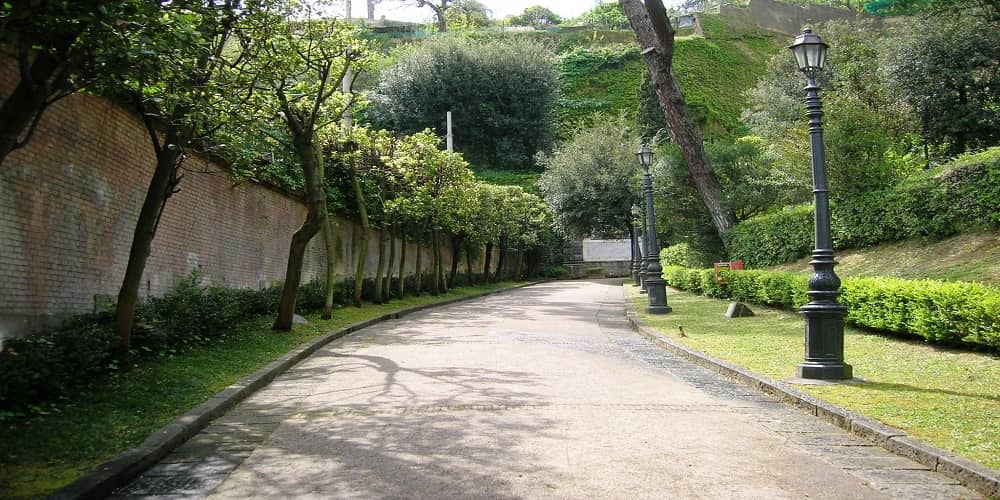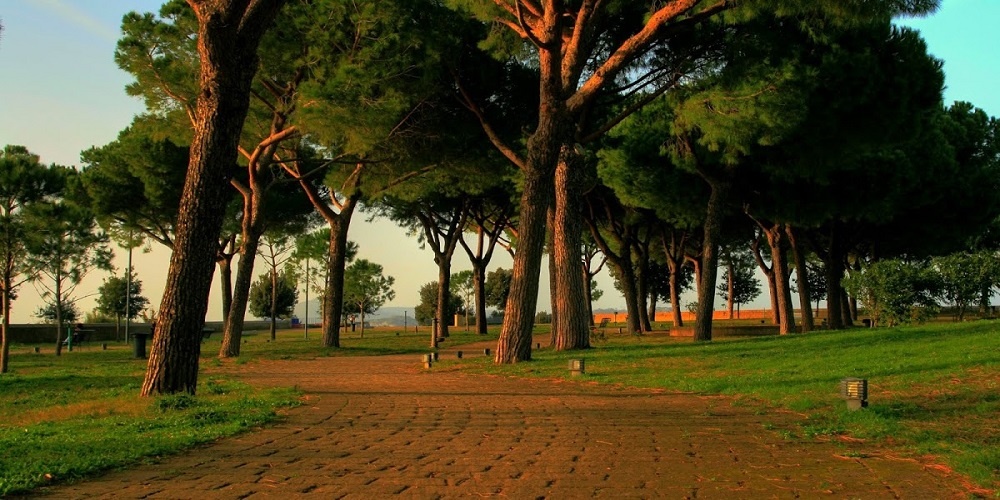The Royal Park of Capodimonte in Naples
One of the green areas, the largest by extension, of the city of Naples is the royal park of Capodimonte. It is a city park located in the upper part of Naples, Capodimonte. The park is famous in the eyes of the world to host the Royal Museum of Capodimonte. A museum that contains priceless works of art, including the world-famous Capodimonte ceramics.
The park is a true work of art but unlike a statue, a painting or a musical composition a garden can never be said to be finished. It is a living organism, which continues to grow and transform itself, so much so that a place constantly changes its appearance, even from one day to the next.
The Capodimonte park covers an area of one hundred and twenty-four hectares, partly protected by walls built in the 1820s. The park can be accessed through two gates, the main gate, Porta Grande, along Via Ponti Rossi and a secondary gate, Porta Piccola. A third door, Porta Caccetta, was created in 1816, enlarged in 1834, demolished during the middle of the 20th century and restored in the early 2000s.
Today the park is a popular tourist destination for those who visit the city of Naples but not only. Neapolitan citizens love to spend their days in the park, especially in summer, lying on green lawns, in English style, to have a picnic in the open air, go jogging or simply take a walk. The park is equipped with training equipment, a path called "life path" suitable for all athletes who want to keep in training without having to go to the gym. At the park you can take your dogs for a walk, thanks to the two dog areas provided by the administration.

The Virgilian Park in Naples

One of the favourite places of Neapolitans, especially young people and students, is the Parco Virgiliano, also called "Parco della Rimembranza". The park is located on the extreme tip of the promontory of Coroglio, on the hill of Posillipo, 150 meters above sea level. The park is a popular place for students, who love to relax in the sun and study in the open air, but it is also a perfect place to take a walk or eat an ice cream, drink a beer and spend some free time with children. The park is equipped with an athletic track, accessible to anyone, and a regulation football pitch, so you can train in total freedom. During the summer period many training courses are held throughout the park. The Virgilian Park enjoys a beautiful view, thanks to its belvedere, of the entire Gulf of Naples: from Vesuvius to the coast of Sorrento and above all it overlooks the beautiful islet of Nisida and the coast of Bagnoli. The park was built in the '30s on an area of 21,5000 m², in the '60s a sports facility was built inside it that still exists today. The new facility was inaugurated in June 2002, and since then has returned to be an important place of sport, nature and aggregation for families, young people and athletes intent on spending hours of leisure and carefree in one of the most beautiful scenery of the city.
The park is accessed from Viale Virgilio, through a monumental entrance that leads to a square in which stands a fountain recently built.
Villa Floridiana in Naples

One of the green lungs of the city of Naples and in particular of the Vomero district is Villa Floridiana. It is a beautiful public park, accessible all year round for free, located in the heart of Vomero district. The park is accessed through two streets, Via Cimarosa and Via Aniello Falcone. The Villa dates back to the XVlll century and in 1816 King Ferdinand l of Bourbon, son of Charles of Bourbon, bought it to give it to his wife, Lucia Migliaccio, Duchess of Florida, as a summer residence. The Villa still bears the name of the King's wife. The Villa is perfect for walks surrounded by greenery, to escape the smog and noise pollution of the city. The citizens of Vomero love to have picnics and spend mornings reading, you can have breakfast or lunch enjoying the surrounding greenery thanks to the presence of a bar located throughout the Villa. From Villa Floridiana you can admire a breathtaking view of the Gulf of Naples.
Inside the park there is the Museum Duca di Martina, home of the major Italian collections of decorative arts and ceramics. The structure currently includes more than six thousand works collected during the nineteenth century by the Duke of Martina, Placido de Sangro. Ivory and coral, paintings, majolica, miniatures and enamels are displayed on the ground floor together with 17th century furniture and furnishings.
The Villa Comunale of Naples

A few steps from the beautiful promenade of Mergellina there is a green area that serves as a lung for the city and a place of leisure for the citizens of Naples, we speak of the Villa Comunale. The Villa Comunale of Naples is a public garden that separates the Riviera di Chiaia from the seafront of via Caracciolo. A green lung of Naples that extends between Piazza della Repubblica and Piazza Vittoria. It has always been a meeting place for young and old. A place where you can take a walk, read a book, eat an ice cream or drink something cool. Thanks to its huge open spaces it is perfect for jogging, sports activities or cycling. The Villa is also equipped with playgrounds for children.
The Villa Comunale was built by Viceroy Don Luis de la Cerda who created the Royal Promenade in 1697. A long avenue, decorated with two rows of trees and 13 fountains, to be used on fine days to entertain friends with parties and receptions. Between 1778 and 1780, at the behest of Ferdinand IV of Bourbon, the area was completely redesigned. The works were entrusted to Carlo Vanvitelli, son of the more famous Luigi who availed himself of the collaboration of the royal gardener Felice Abbate. The entrance to the promenade was reserved exclusively for royalty and nobles.
Inside the Villa there are some noteworthy buildings, among which the Casina Pompeiana, destined in 1880 to host art exhibitions; the great Cassa Armonica (designed by Enrico Alvino) in cast iron and glass for concerts; the Stazione Zoologica A. Dhorn with the annexed Aquarium. There is also space for shopping, every third and fourth weekend with the largest flea market in the city.
The Vergilian Park of Naples

Those who come to Naples cannot not pass through the Parco Vergiliano. The Park, located in Piedigrotta, one of the lowest areas of Naples, near the Riviera di Chiaia, takes its name from the mausoleum that, according to historians, collects the remains and the tomb of the great Roman poet Publius Virgil Marone, also known as Virgil. Dante's guide in the Divine Comedy is not the only one to rest in the entire Park, in fact, rests another great Italian poet: Giacomo Leopardi. The Park is a combination of art, history and nature, all visitable every day and free of charge. The path that leads to the two sepulchres is adorned with plants and shrubs of various kinds, all mentioned, in a very special way, by the poets within their works, all accompanied by captions painted by hand on majolica tiles. It is possible to admire the famous brooms to which Leopardi dedicated one of his last poems, or plunge into the laurels, cypresses and oaks of which Virgil speaks in the Bucolic and Georgicas.
Also Goethe, during his Grand Tour, passed through the Vergilian Park. The German poet crossed the Crypta Neapolitana a cave dug in the tuff, along a path of about 700 meters, which joined Fuorigrotta and Mergellina, and whose entrance is right inside the Park. Today the crypta is no longer passable.
About the author
Written on 20/02/2020




Vincenzo De Rosa
In Campania, especially in the city of Naples there are numerous public parks, green areas and protected areas where you can spend days in the open air, breathing oxygen, freeing your lungs from city smog. The city of Naples offers its citizens wide green spaces ideal for children but also for adults, for long walks or simply to relax. Let's discover together the 5 green lungs of the city of Naple